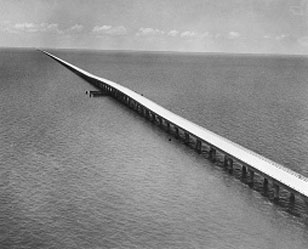Here's another captivating fact about civil engineering:
"The Great Wall of China: A Monumental Feat of Ancient Engineering"
Stretching over 13,000 miles (21,000 kilometers) across rugged terrain, the Great Wall of China stands as one of the most impressive architectural achievements in human history. Built over centuries by successive dynasties, this colossal structure is a testament to the ingenuity, determination, and craftsmanship of ancient Chinese civil engineers.
Constructed primarily as a defensive fortification to protect against invasions from nomadic tribes to the north, such as the Mongols and Xiongnu, the Great Wall comprises a series of walls, fortifications, and watchtowers, strategically positioned along China's northern border.
The construction of the Great Wall began as early as the 7th century BCE, during the Warring States period, and continued for over two millennia, with various dynasties adding to and reinforcing its structure. The most famous sections of the wall were built during the Ming Dynasty (1368-1644 CE), using bricks and stone blocks bonded together with a mixture of lime and sticky rice paste, known as "Chinese concrete."
One of the most remarkable aspects of the Great Wall's construction is the sheer scale and complexity of the project. Built across diverse geographical features, including mountains, deserts, and plains, the wall required innovative engineering solutions to overcome formidable challenges.
Engineers employed a variety of construction techniques tailored to the specific terrain they encountered. In mountainous regions, where the terrain was rugged and uneven, workers carved stone blocks from quarries and used them to build retaining walls and steps, creating a series of terraces that followed the natural contours of the land. In flat plains, where materials were abundant, rammed earth and tamped soil techniques were utilized to build long stretches of wall quickly and efficiently.
Despite its impressive size, the Great Wall was not just a physical barrier; it also served as a sophisticated communication network, with signal towers and beacon fires used to relay messages and warnings across vast distances. Additionally, the wall facilitated trade and transportation along the Silk Road, further enhancing its strategic importance in Chinese history.
Today, the Great Wall of China stands as a symbol of China's rich cultural heritage and a testament to the enduring legacy of ancient engineering marvels. Its awe-inspiring presence continues to attract millions of visitors from around the world, inspiring wonder and admiration for the ingenuity of the engineers and laborers who built it brick by brick over millennia.
let's dive into some fascinating structural details of the Great Wall of China:
1. Mortarless Construction:
In many sections of the Great Wall, particularly those built during the Qin Dynasty (221-206 BCE), the stones were stacked together without mortar. Instead, the builders relied on precise craftsmanship and interlocking techniques to create a sturdy and resilient structure. This technique, known as "dry stone masonry," allowed the wall to flex and adapt to changes in temperature and seismic activity without compromising its integrity.
2. Winding Design:
Contrary to popular belief, the Great Wall is not a straight line but rather a series of interconnected walls with various twists and turns. This winding design served multiple purposes: it followed the natural contours of the terrain, making construction easier and reducing the need for extensive earthmoving; it allowed defenders to take advantage of natural defensive features such as cliffs and valleys; and it provided better visibility for sentries stationed along the wall, allowing them to spot potential threats from a distance.
3. Optimized Defensive Features:
The Great Wall was more than just a physical barrier; it was a highly sophisticated defensive system designed to deter invaders and facilitate rapid communication and mobilization. Along its length, engineers incorporated a range of defensive features, including battlements, parapets, and watchtowers. The battlements provided cover for archers and allowed defenders to rain down arrows on approaching enemies, while the watchtowers served as lookout posts and signal stations, enabling rapid communication across vast distances using smoke signals or beacon fires.
4. Strategic Passes and Gates:
Throughout the Great Wall, strategically located passes and gates served as key chokepoints where defensive forces could concentrate their efforts and repel enemy attacks. These passes were fortified with additional walls, watchtowers, and defensive structures, making them formidable obstacles for would-be invaders. Famous passes such as Jiayu Pass and Shanhaiguan Pass were meticulously engineered to control access to vital trade routes and protect China's heartland from incursions.
5. Integration with Natural Features:
One of the most remarkable aspects of the Great Wall's design is its seamless integration with the surrounding landscape. Rather than imposing itself upon the environment, the wall harmonizes with the natural topography, blending into mountains, cliffs, and ridges. In some sections, the wall follows the contours of the land so precisely that it appears to be an extension of the natural rock formations, enhancing its camouflage and defensive capabilities.
These extraordinary structural details highlight the ingenuity and foresight of the engineers and laborers who built the Great Wall of China, transforming it into an enduring symbol of human achievement and resilience.
These extraordinary structural details highlight the ingenuity and foresight of the engineers and laborers who built the Great Wall of China, transforming it into an enduring symbol of human achievement and resilience.













